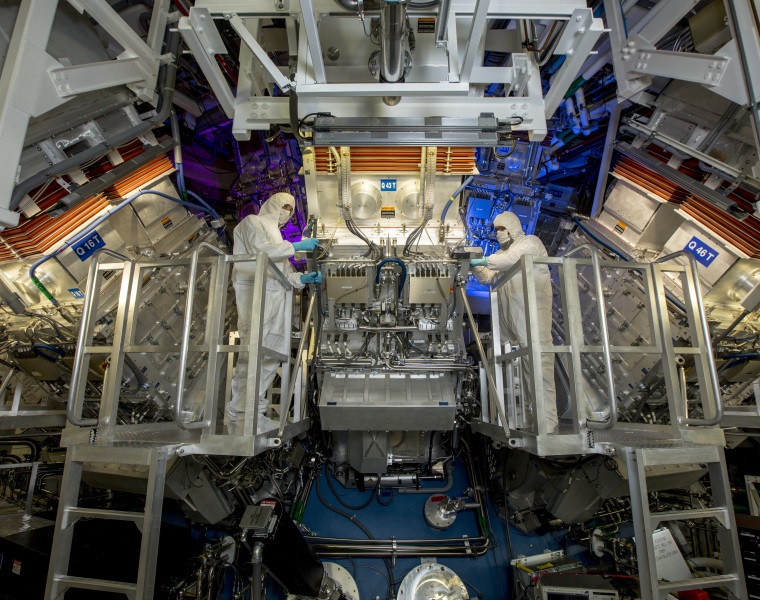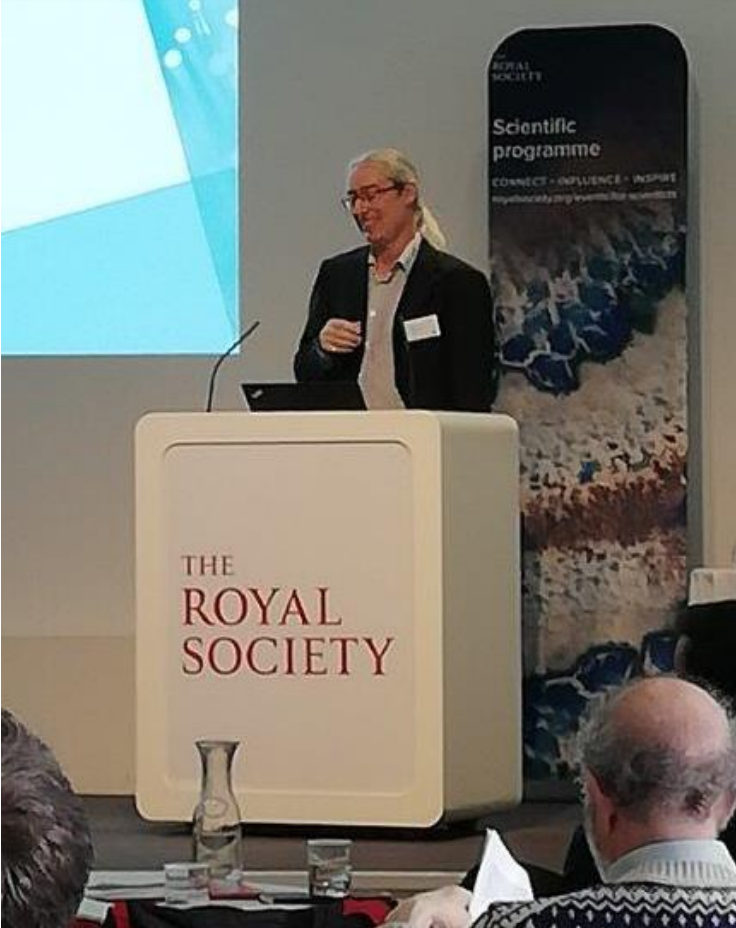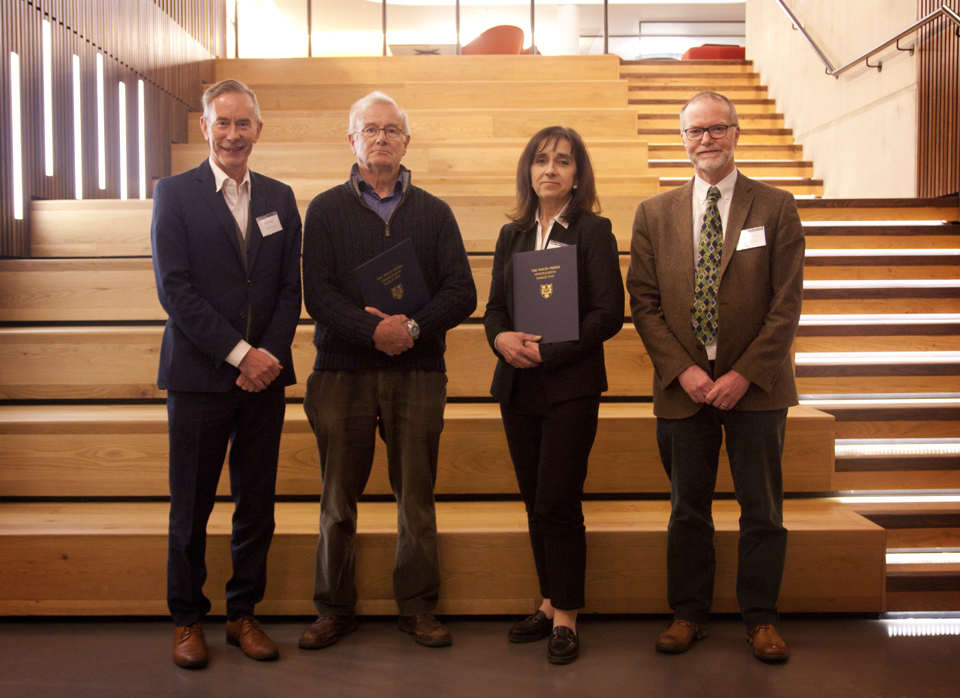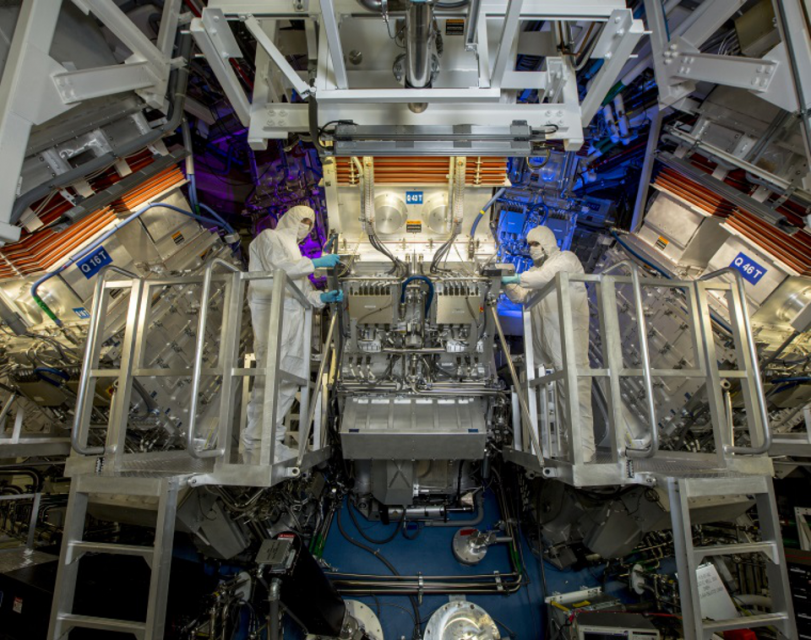 Nuclear fusion promises the prospect of an energy source that is clean, safe, and (virtually) inexhaustible. While the past half-century has seen monumental scientific and engineering efforts towards designing a viable nuclear fusion reactor, no reactor has yielded more fusion power than the electrical power required to operate it - yet. On the 2nd and 3rd of March, the Royal Society played host to a meeting of the world’s foremost scientists and policy advocates in nuclear fusion entitled Prospects for High Gain Inertial Fusion Energy, which was organised by leading academics from the UK and the USA: Peter Norreys (University of Oxford), Kate Lancaster (University of York), Mark Koepke (West Virginia University), George Tynan (UC San Diego), and Christopher Ridgers (University of York). The meeting featured a series of talks reviewing the current state-of-the-art in global inertial fusion research, and setting out the preparations necessary to meet the grand challenge of realising commercial fusion power.
Nuclear fusion promises the prospect of an energy source that is clean, safe, and (virtually) inexhaustible. While the past half-century has seen monumental scientific and engineering efforts towards designing a viable nuclear fusion reactor, no reactor has yielded more fusion power than the electrical power required to operate it - yet. On the 2nd and 3rd of March, the Royal Society played host to a meeting of the world’s foremost scientists and policy advocates in nuclear fusion entitled Prospects for High Gain Inertial Fusion Energy, which was organised by leading academics from the UK and the USA: Peter Norreys (University of Oxford), Kate Lancaster (University of York), Mark Koepke (West Virginia University), George Tynan (UC San Diego), and Christopher Ridgers (University of York). The meeting featured a series of talks reviewing the current state-of-the-art in global inertial fusion research, and setting out the preparations necessary to meet the grand challenge of realising commercial fusion power.
 The meeting was opened by Professor Peter Norreys, Professor of Inertial Fusion Science at the University of Oxford, with a talk entitled Preparations of a European R&D Roadmap for an Inertial Fusion Demo Reactor. Also to speak was Professorial Research Fellow Steven Rose, who delivered a presentation describing the framework used to model a burning thermonuclear plasma. The programme further included a talk by Head of Physics at AWE, Professor Andrew Randewich (pictured left), highlighting the importance of inertial confinement fusion studies for underwriting the safety and efficacy of the nation’s nuclear deterrent. These scientific talks were complemented by discussions on how fusion power plants might eventually be integrated into the existing electricity market, and the role of the private sector in making fusion power a reality. Delegates left the meeting excited to begin discussions on a new joint UK-USA research initiative to start a bilateral inertial fusion energy programme. Recorded versions of the meeting's presentations are available on its website, and the meeting papers are published in a special issue of Philosophical Transactions of the Royal Society A.
The meeting was opened by Professor Peter Norreys, Professor of Inertial Fusion Science at the University of Oxford, with a talk entitled Preparations of a European R&D Roadmap for an Inertial Fusion Demo Reactor. Also to speak was Professorial Research Fellow Steven Rose, who delivered a presentation describing the framework used to model a burning thermonuclear plasma. The programme further included a talk by Head of Physics at AWE, Professor Andrew Randewich (pictured left), highlighting the importance of inertial confinement fusion studies for underwriting the safety and efficacy of the nation’s nuclear deterrent. These scientific talks were complemented by discussions on how fusion power plants might eventually be integrated into the existing electricity market, and the role of the private sector in making fusion power a reality. Delegates left the meeting excited to begin discussions on a new joint UK-USA research initiative to start a bilateral inertial fusion energy programme. Recorded versions of the meeting's presentations are available on its website, and the meeting papers are published in a special issue of Philosophical Transactions of the Royal Society A.

On the following day, a colloquium was held in the Martin Wood Lecture Theatre at the University of Oxford to commemorate the 80th anniversary of the 1940 Frisch-Peierls Memorandum. This memorandum, arguably one of the most important scientific documents of the 20th century, was composed by Otto Frisch and Rudolf Peierls during their tenure at the University of Birmingham, and was the first technical description of an airborne atomic weapon. Lectures were delivered by Doctor Kim Budil of Lawrence Livermore National Laboratory and by Professor Frank Close of the University of Oxford to commemorate the following 80 years of UK-USA collaborations in high-energy-density physics and fusion science.

